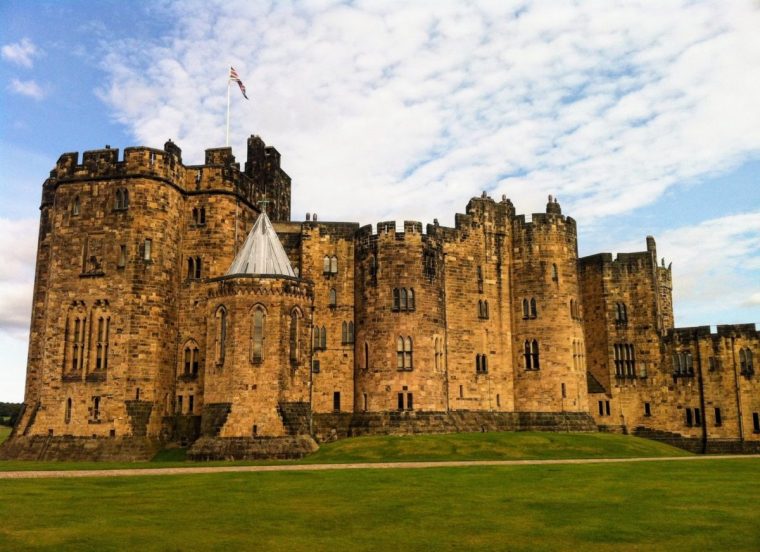As I gaze up at the Second World War lookouts on the beach in Blyth, Northumberland, I think of my grandad George, who was born here and served with the Durham Light Infantry.
He later volunteered for the paratroopers. According to a newspaper cutting which my late mum lovingly placed in a family album, was captured in Arnhem, the Netherlands, and kept as a prisoner of war until he escaped in 1945.
The battery observation posts on the beach in Blyth, which are made from the sort of giant white concrete slabs you might see in Grand Designs, were, it says, replaced in 1940, with newer cannons, which are still here today.

I imagine grandad, aged 17, walking along the beach and gazing up at the lookouts. The beach has since been given a dramatic makeover and now has some colourful huts along the front. But Blyth’s port, the hub of its industrial shipbuilding heritage, is visible in the distance.
The new Northumberland Line, which opened last weekend, will help connect Blyth with Newcastle when fully operational next year and stopping at nearby Seaton Delaval.
I’m staying at the sumptuous Matfen Hall, a historic country house hotel around half an hour’s drive west from Newcastle. I have come to this part of the country – of which I only have vague childhood memories – to find out more about my Geordie roots.

My grandfather died when I was around nine or 10. I have a few memories of sitting on his knee and him hanging me upside down to tickle me. I remember him as a big friendly giant with a gap in his teeth and a wide smile.
He was the opposite of my petite, well-spoken granny. She was a privately educated girl from the Cotswolds, grandad a burly working class Geordie, the son of a builder. I was told that my great grandparents didn’t think he was good enough for their eldest daughter.
My first stop is Alnmouth, a pretty coastal village four miles south of the picturesque market town of Alnwick, where my grandad’s sister, Mary, had a hotel. I walk up and down Northumberland Road, now home to an upmarket deli – the sort that sells cheese and chorizo on butchers’ blocks – as well as a few cafes, a shop and a smart looking pub, trying to find it.
Finally, I stop and look up at a place called The Whittling House. It’s built in the local Northumberland sandstone and has a smart, double fronted exterior. I go in and ask the girl behind the bar if this used to be The Saddlers Grill. It did, she confirms, but, sadly, she doesn’t remember my aunt. As I walk round, I realise I vaguely remember the huge windows, an open fire burning in the grate, and someone calling me “pet.”
The road winds down to a glorious beach, which sits in a pretty bay at the mouth of the River Aln. The sand dunes slope down to the beach where I see children building dens.
I head to Alnwick next and I am blown away by how lovely it is. The famous Capability Brown gardens centre around a cascading water feature and sit adjacent to the gothic Alnwick Castle, home to the Duke and Duchess of Northumberland. It’s where the first and second Harry Potter films were shot.

The castle is closed when I visit, unfortunately, but it presides over the town, rather like Arendelle in the Disney film, Frozen. It’s one of many castles I see on my trip along the coastal road, including Warkworth and Bamburgh.
The castles were – I learn when I visit the little Bailiffgate Museum, a “people’s museum” in Alnwick dedicated to telling the stories of the area – and how the Anglo-Saxons and Normans built so many castles to defend Northumberland from the Scots and the English.
I also learn a little more about the mining roots and the pits in North Northumberland, one of which, Longdyke Colliery, was presided over by a 10-year-old boy, appointed under-manager in 1906. Listening to audio recordings of the miners at the museum reminds me of the language my grandad used “wey aye, man” and “yes, pet.”
Just around the corner from Alnwick Castle, I find a statue of the mighty Harry Hotspur, Alnwick’s famous Knight and one of Shakespeare’s best-known characters. Harry, aka Henry Percy, was the oldest son of the 1st Earl of Northumberland and got his nickname as a tribute to his speed on the battlefield.

The shop fronts overlooking the green, with their sandstone facades and Farrow & Ball painted doors, remind me of a street in my Granny’s native Cotswolds.
The highlight of my trip, however, is a visit to Alnwick’s Barter Books, formerly the railway station and now a quirky, destination bookstore and café with open fires, model trains and neon lights installations dotted around. I could stay there all day.
Winding my way back along the coastal route, not far from Hadrian’s Wall, I see Roman ruins, pretty villages and stunning sandy coastline that goes on for miles.
I feel an ancestral pull to the area and vow to revisit my grandad’s native Northumberland again with my own family. Next time, I’ll book into my great aunt’s old hotel.



'President Musk' is flexing his muscles and revealing how weak Trump is